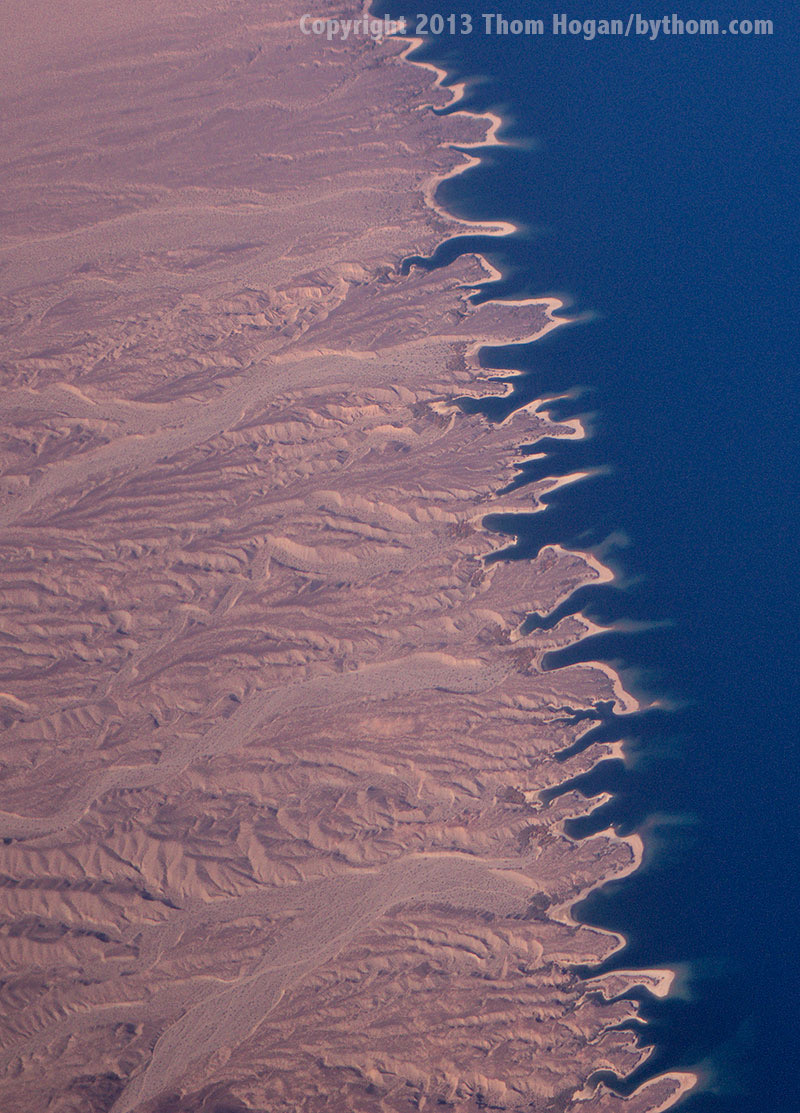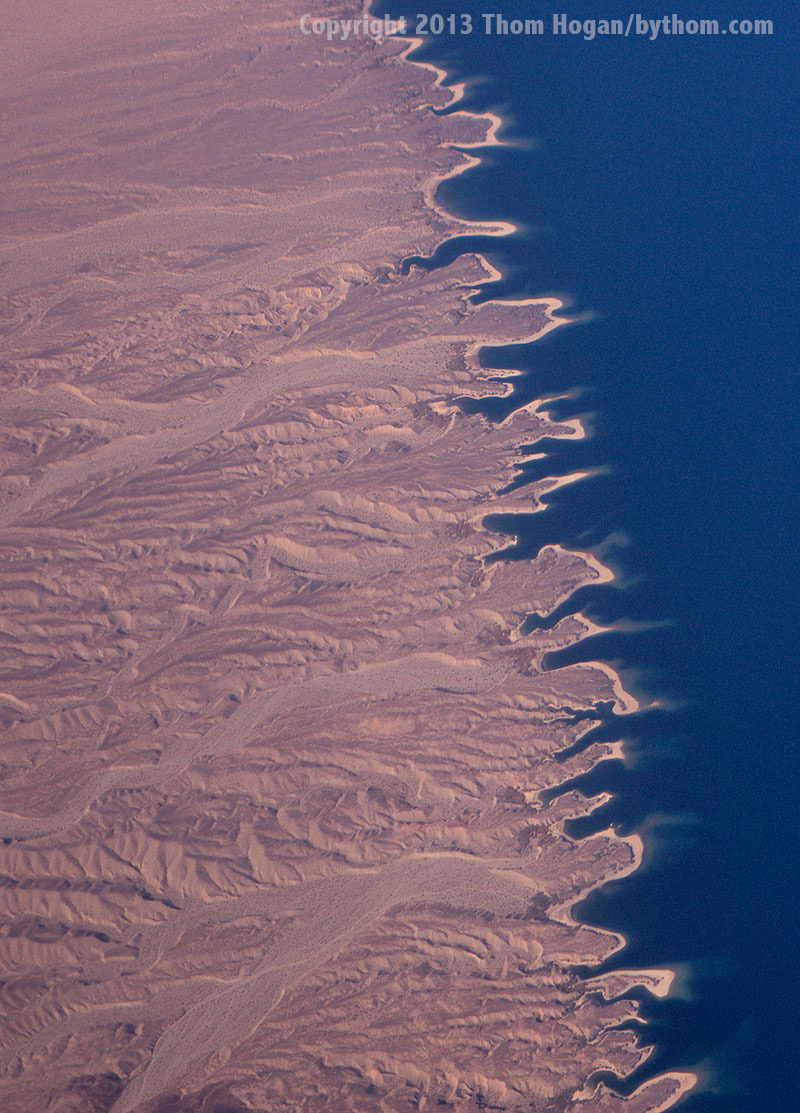
Composition, simply put, is the act of saying something. Sure, a photograph is visual, but it’s still a communication. You’re in full control, so show your viewers what you’re saying. In this image we have two basic elements and an interesting decision in how to place them. Eroding sandstone on the left, placid water on the right. Earth and water. The composition is what I call “half and half.” Two elements, with one dominating half the shot, the other dominating the other half.
Magazines often like shots like this because they can use it as a two page spread and put copy over all that negative space on the right without really ruining the impact of the shot. (We photographers hate that, as we think any text ruins our shots. We writers love that, especially if we get paid by the word, because it means we don’t lose a page to photos and illustrations.)
Framed the way you see it above, we have “equivalence” (remember: half and half). We’re making some sort of statement about water. On the left we see what water does when in action. On the right, we see water itself at rest (and bit of what sandstone does to water: note the faint threads of discoloration that extend into the water).
One thing pro photographers do a lot that amateurs don’t always do is rethink what they want to say and take other shots using the same elements to try to say something different, even if it’s only slightly different. So immediately upon taking a photo we’re challenging our brains to come up with different interpretations using the same elements. That usually involves changing the “formula” that got us our composition in the first place. What if instead of half and half we went primary/secondary? That quickly leads us to a composition more like this:

Here the statement is about what happens to the earth as water gets close to its resting place. This shot is about the journey of water, not about water per se.
I love attractions like I found with this shot. There are an infinite number of ways to frame what I was seeing here. There are mysteries (earth only shots, especially where the contours are convoluted), there is that strange boundary between the sand and water where fingers of earth protrude into the water but fingers of water protrude into the land. There are even patches of vegetation tucked away in there (difficult to see with the wide angle lens I was using, but I could have switched lenses). This is one of those situations where there are pictures within pictures within pictures, and yes, pictures outside the pictures I’ve shown you (is the water a lake, is it an ocean, is it a river?).
You can’t get to the composition unless you know what you want to say. That’s one reason why when I’m working with students in the field, I’ll often ask them to “name” their photo. What’s the name going to be on the placard next to the photo when it gets hung in a gallery? The less the name is about objects (Earth and Water) and the more it is evocative (Half and Half), the better, as it gets you to the proper framing faster. Consider Ansel Adams’ "Moon and Half Dome.” Didn’t really help him frame it, did it? Curiously, most people refer to the shot as “Moon over Half Dome,” which does start to talk about how the elements are composed. What if the shot were called “Two Rocks”? Or “Big Rock, Small Rock”?
So next time you go out to shoot, say something. Name your shot. Use adjectives, adverbs, and modifiers of any kind. Things that suggest rather than label. Then compose.
